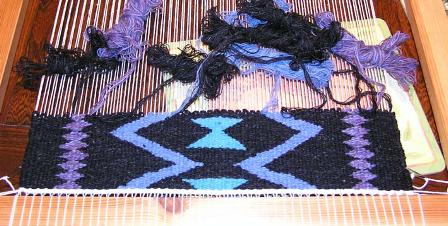
I had set my alarm to get up fairly early this morning, thinking I might do a morning walk. However, I didn't sleep well at all last night, so I ended up turning that off and going back to sleep for a while. It's nice to have that option.
When I did get out of bed, it was a grey day, and fairly cold. I did a load of laundry and set the sheets out on the line to dry, only to find that one blew off the line. When I went out to recover it, I found it felt like rain was imminent, so I took the sheets off the line and brought them inside to dry on the heaters instead.
This was a really good move, as about 10 minutes later I looked out and it was pouring, the sideways rain we get here when the winds are up. I saw poor Ali out on her horse, trying to find ways to stand out of the spray, but ending up getting totally soaked. She eventually headed back home without finishing her ride.
I felt grateful I hadn't set out for a morning walk at that point, as I would undoubtedly have been out in that rain and gotten drenched. I'm surprised it hasn't happened yet, but so far I've only been rained on a few times, and I've never gotten very wet.
I spent the morning weaving. I took out a part I had already done and redid it because I decided I just wasn't happy with the way it had turned out. I'm pleased with the result of the reworking, so it was a good decision.

By one o'clock, things had brightened up a bit, and it looked like we might not be in for any more serious rain. So, I grabbed a sandwich for lunch and headed out to Arnol.
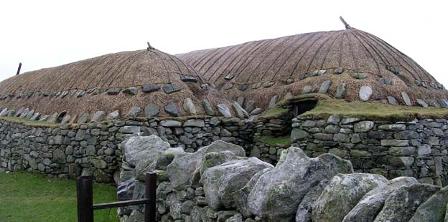
|
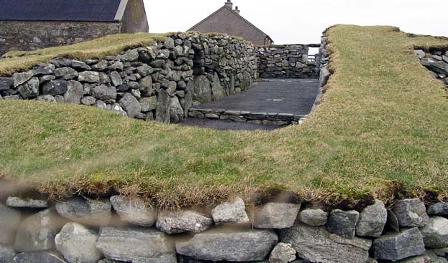
|
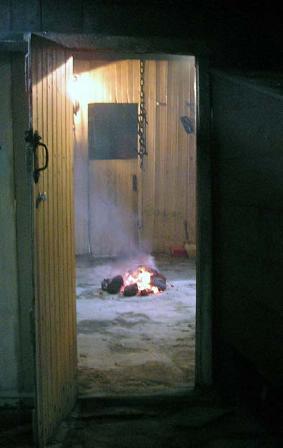
| The black house exhibit is quite well done, particularly the fact that you smell the peat fire and feel the sting in your eyes from the smoke. It gives you a real feeling of some of what these folks lived with. The fascinating thing is that black houses were still lived in by many folks as recently as the 1960s. |
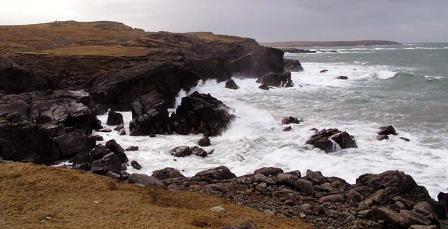
From here I turned left and headed south toward the town of Bragar, following the coastline as I went. The shoreline changed rapidly from heavy low-faced cliffs and rocks to smaller, washed rocks, with less rugged coastline. These rocks will still large rocks, many would qualify as boulders, but they were all completely loose and washed totally smooth on all sides by the action of the waves. The stone was beautiful.
I passed Little Arnol Island, which wasn't an island at all at the time I passed, as a solid rock causeway was available to walk to it if you wanted. The seaweed and kelp made walking a bit too slippery for my tastes, so I didn't attempt to make it to the island this way, but it certainly could have been done. Instead, I walked along the dry rocks and boulders for the length of the rock beach. In the middle of the beach, the River Arnol comes dumping out. The guidebook I had warned that you would need to cross the river on stepping-stones, and if the rain had been heavy recently, you might have to remove your shoes and wade. Since this is the rainy season (not the time I expect the book author is thinking you will make these walks), I was pretty sure I wouldn't be able to cross with dry feet. Sure enough, although it wasn't particularly deep, there was no pathway that would allow me to avoid giving my feet a solid dunking. Although taking my shoes off to wade is very appealing, it was a bit too cold and windy for me to want to do this, so I tested the waterproofness of the shoes thoroughly. They worked well until I took a step that took my ankle below water level, at which point my foot was soaked. I was grateful for my hiking socks, which kept my feet feeling relatively warm and dry anyway for the rest of the hike.
My path continued along this round rock terrain for a very long distance. I reached a point where the rocks themselves were an isthmus between the coastline and a loch, with only the rocky walkway in-between. The walking was slowly becoming quite difficult, for my ankles were getting tired of trying to help me keep my balance on the uneven footing.

On the sea side, I was getting quite a show from the seabirds, especially the ringed plovers, who would fly in acrobatic formations all around the crashing waves on the shore, and then suddenly come in for a landing. They were quite fun to watch. On the loch side, I was getting entertained by the sheep, who were watching me suspiciously. One pair watched me go by very anxiously, and then just as I passed, turned to each other as if to discuss the matter. It was quite hilarious.
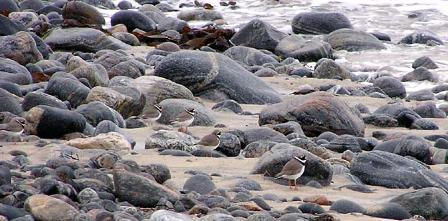
|
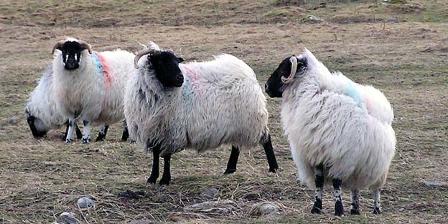
|
Eventually, the terrain turned back to the more-familiar machair/moor/hills for walking, and rocky coastline. From here I continued along the rugged coastline until I reached the Bragar cemetery. This is a fascinating cemetery, as it clearly had a church or other building there at one time, and the old building is surrounded by gravestones that are so old that all shape and meaning are lost, if they were ever shaped or carved on at all. There are also modern graves, including a number of Morrison stones. I spent a short time here, and then headed on to Bragar Bay.
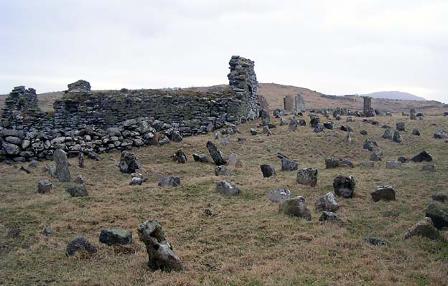
Bragar Bay is a somewhat sandy beach with a boat slip and more rocks and boulders -- a true mix of styles of shoreline. There were quite a few people congregated there, and they asked me as I came by if I had seen any stranded whales. (Which, obviously I hadn't or I would have reported it here...) They had heard there might be stranded whales and were all out to look for them.
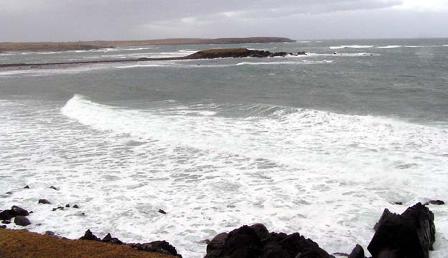
Since I hadn't seen any, and I knew it was quite a long ways back to my car, I headed on with my route, walking the streets of Bragar back to the main road, and across to Arnol. After collecting my car, I drove back to Bragar Bay to see if anything had been found, but everyone was gone. I assume this probably means they didn't find any stranded whales, thank goodness!
I measured the drive from the place where I'd parked the car to the place where I stopped at Bragar Bay, and it was almost five miles. The book tells me the total walk is five miles. Since the coastline has to be similar in length, I'm thinking that the measurements given in this book for walks has to be really off, or else my car odometer is very wrong. I suspect it's the first.
Return to